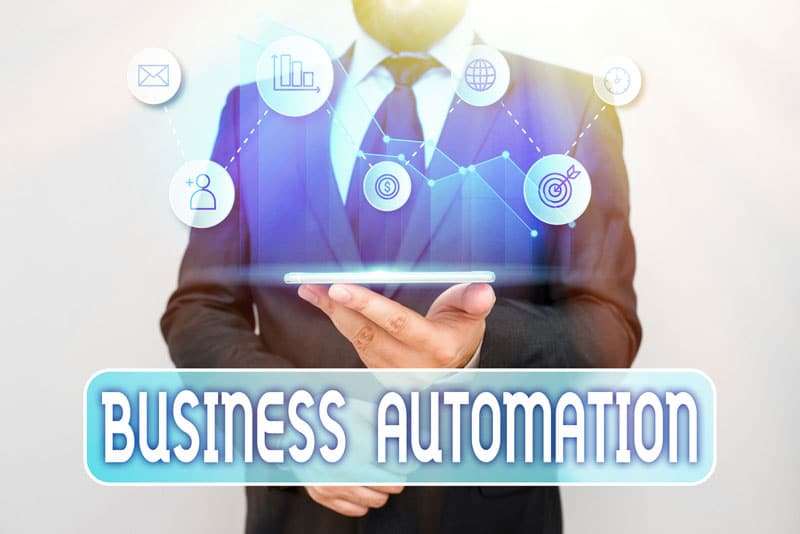This is an update to the blog How the New Trend of Hyper Automation Helps in Business Growth
Every day, new sets of data are generated and it plays a vital role in understanding and deriving valuable insights about customer preferences and target demographics. Companies can use data insights for product improvement, business strategy, and marketing campaigns to cater to the target customers. Converting all data into digital format with the help of data conversion services enables automation, assures improved data quality, and structures all the data so that it can be applied on new technologies to improve efficiency and productivity of the enterprise. Today, new technologies like big data analytics, AI and natural language processing are combined with automation to improve business processes that are more complex. When automation and intelligence meet, it is known as hyper automation.
According to Gartner, hyper-automation “involves a combination of tools, including robotic process automation (RPA), intelligent business management software (iBPMS) and AI, with a goal of increasingly AI-driven decision making.” Hyper automation helps to create a digital twin of the organization and allows organizations to visualize how functions, processes and key performance indicators interact to drive value.
Why businesses need hyper automation
As per Gartner’s research, Hyperautomation is the number one in Strategic Technology Trends for 2020. Hyperautomation is a mixture of several technologies like robotic process automation, intelligent business management software (IBPMS), machine learning (ML), and artificial intelligence (AI). It can improve the capability of modern machines.
Conventional automation aims at avoiding the dependency on human assistance but hyper automation provides an extra layer of robotic intelligence which makes processing faster.
Using hyper automation, organizations can enhance their RPA with intelligence. Virtual workers can be created who will perform repetitive organizational activities, and lighten the burden on employees who can focus on other core activities and improve performance. Hyper automation can help connect diverse business applications, function with both structured and unstructured data, review data and make decisions. It can also help discover new automation opportunities. These could not be achieved with conventional automation techniques.
Hyper automation is still in its budding stage. RPA and AI are used in call centers to automate processes such as mouse clicks and application launch to help an agent quickly pull information about a client from multiple systems. When a customer calls, the agent should be able to gather all information about the customer from various sources to get a complete customer profile. With hyper automation tools, the process of gathering information becomes easier and the agent need not switch between several applications.
Two main components of hyper automation
Hyper automation has two main elements RPA (Robotic Process Automation), to connect legacy systems and IBPM (Business Process Management) to manage long-term processes.
- RPA: RPA or Robotic Process Automation is the use of computer software to perform tasks, activities that are repetitive and rule-based like payroll processing, data entry etc. It also allows two more software platforms to talk and /or exchange information. It can perform only a single task or short process at a time that does not need human intervention.
- IBPM: IBPM means a combination of business process management (BPM) and complementary technologies like AI that help business to automate process from end to end like on boarding process that where data needs to be collected, shared and stored. Unlike RPA, IBPM allows automation of workflows.
Other technologies used in hyper automation
- AI: Artificial Intelligence is the capability of a software or a computer to perform an activity that is usually done by humans. It requires human intelligence or discernment like learning, planning, recognizing speech and resolving problems. AI aims at improving the capacities of these systems to work and think like humans.
- ML: Machine Learning is the application of AI that allows the software to learn and improve without the need for programming. It provides autonomy of the system to access data and learn automatically by observing the way data changes. It offers data-backed validation to remove operational efficiencies.
Advantages of hyper automation
- Integrations: Hyper automation allows you to easily share data across multiple apps that business lines and areas use. It also provides smooth and quick access to data. For example, if the company uses an app for salary payments, with hyper automation it can connect it to other apps that help manage other processes, such as employee hiring and onboarding.
- Real-time access: Hyper automation helps to understand what is happening on a real-time basis. Managers can access open requests, understand the current status of the project, who is working on the project etc. This helps to resolve problems easily and make quick business decisions.
- Eliminates gaps and deficiencies: Today, businesses have access to various technologies that let them digitize and automate a full line of business processes. With the integration hyper automation, businesses will be able to automate the complete process, right from the moment a customer asks for a quote to the moment when the customer’s desire fulfilled.
- Better productivity: Better productivity is the most prominent advantage of hyper automation. It enhance the potential and capabilities of the employees. Instead of wasting time on repetitive tasks, employees can focus more on value-adding activities. Hyperautomation provides digital signatures and automatic storage by profile or project.
Hyper automation is an important strategic trend for 2021 as well, just as it was for 2020. At present, the focus is more on process-based automation rather than task-based automation – automating many tasks in a process, thus moving to functional automation across multiple business processes and further to automation at the business ecosystem level.
Hyper automation is an innovative technology that amplifies the ability to automate work by utilizing the data and the insights derived from it for quick business decision making. To have access to accurate data, make sure to approach a reliable data entry service that provides dedicated data conversion services.




